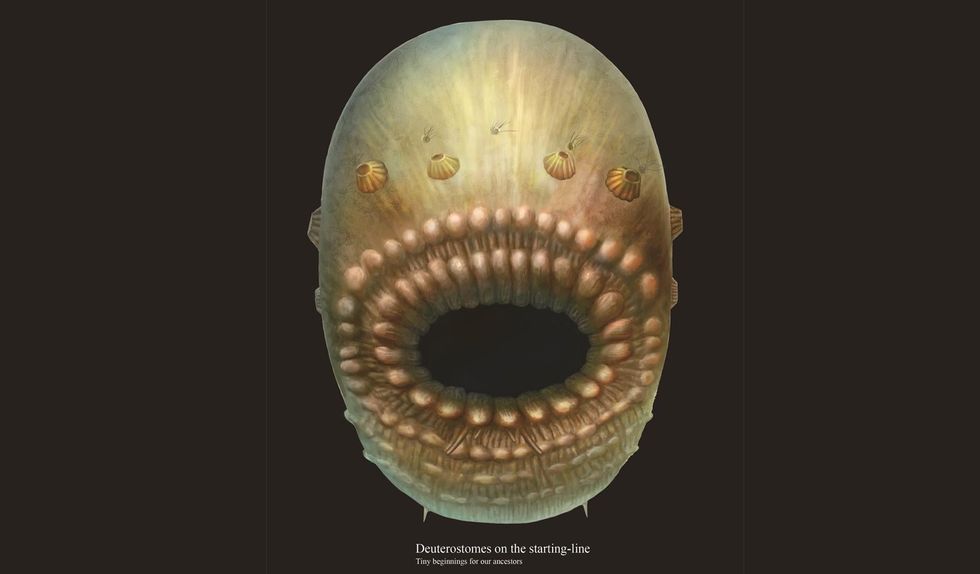
Picture:
Gareth Cattermole/Getty Image
Actually - your ancestor also had a huge mouth and no anus.
So did mine.
It's emerged this week that humankind most likely evolved from a bag-like sea creature which had a large mouth, no anus which moved about by wriggling.
According to a study published in the journal Nature, the microscopic species is the earliest known prehistoric ancestor of humanity and lived 540 million years ago.
The creature is named Saccorhytus, after the sack-like features created by its elliptical body and large mouth, and its existence was identified from microfossils found in China.
Researchers believe it was about a millimetre in size, lived between grains of sand on the sea bed and had a large mouth relative to the rest of its body.
It is thought the creature was covered with a thin, relatively flexible skin, had some sort of muscle system which could have made contractile movements, and researchers believe it got around by wriggling.
The study found the creature probably ate by engulfing food particles, or even other creatures, but scientists were unable to find any evidence the animal had an anus.
Simon Conway Morris, of the University of Cambridge, said:
If that was the case, then any waste material would simply have been taken out back through the mouth, which from our perspective sounds rather unappealing.

The creature is thought to be the most primitive example of a so-called “deuterostome” - a broad biological category that encompasses a number of sub-groups, including the vertebrates.
If the conclusions of the study are correct, then Saccorhytus was the common ancestor of a huge range of species, and the earliest step yet discovered on the evolutionary path that eventually led to humans, hundreds of millions of years later.
Conway Morris added:
We think that as an early deuterostome this may represent the primitive beginnings of a very diverse range of species, including ourselves
To the naked eye, the fossils we studied look like tiny black grains, but under the microscope the level of detail is jaw-dropping.
All deuterostomes had a common ancestor, and we think that is what we are looking at here.
The study was carried out by an international team of academics, including researchers from the Cambridge University in the UK and Northwest University in Xi'an China.
Something tells us this won't come up on an episode of Who Do You Think You Are though.
Additional reporting from PA
Top 100
The Conversation (0)













